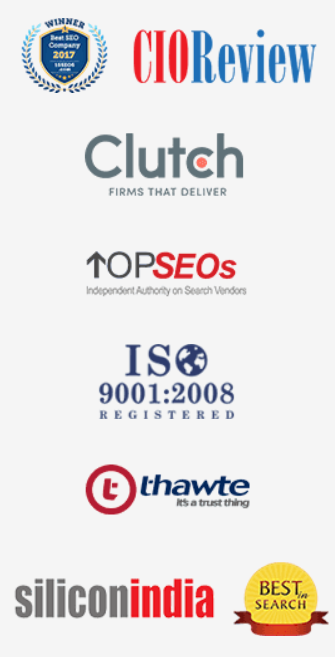There is no rocket science in finding out how we can purchase foreign food, clothes, or furniture, it is simply because everything of that is imported. Similarly, if you are living in a foreign land and you find a commodity that belongs to your native country, that means it is probably exported from there. The import/export business has tied the world with a single knot of goods and services making it small and intact with nearly everything available in every country.
Import/Export is an exponential segment owning a lot of lucrative opportunities for those who are associated with it. Mostly the exports. Exporting the commodities to a foreign land can fetch you shedloads of profits, also giving worldwide recognition to your brand and your homeland. But how you can start your own import/export business? Several people drop the idea just by the notion that it is tedious, expensive and success is far. The reverse is the case if you have a concrete roadmap and have planned a strategy – the realistic steps to start your own import/export business.
The modern import/export business is a complex ecosystem of sale, distribution, and delivery of goods involving third-party vendors or mediators. To kick-start your journey, you can first determine which type of business you are interested in – import or export. Based on that you can be a dedicated manufacturer’s representative or could be a merchant/agent – a freelance broker.
How can you start with your own import/export business?
1. Pick up the product/type of products
Choose the product or the industry that fascinates you and has quite a demand or buzz in the market (domestic/overseas). The best products for your import/export business could be the ones that have just started to become popular or hold a promising future.
Selena Cuffe, an American businesswoman and the largest global exporter of black wine, chose wine as a product in 2005 and started with only one black wine marker and five black-owned brands. Today there are 17 Black Winemakers and 31 Black-owned brands.
Cuffe claims that though there is a lot to be improved in the working conditions in South African Wine Industry, the condition is better than in the last decade thanks to increased sales of South African wines all around the world.
Finding the right product is just the first step to your brand’s success. You need to barge into the right market with your products as you need the right crowd to sell and keep selling your products for decades.
To land on the best results fast, you can conduct surveys, visit local websites, meet government officials and if possible visit the hotspot yourself. You can certainly fetch some data from Census Bureau Foreign Trade reports.
2. Determine the Base of Your Business
You know your product and your type of business – import/export. Now is the time to legally register your business, register your headquarters, get a business license and a domain name you need to operate your business.
Now that you are dealing beyond borders you have to establish a strong portfolio on social media channels as well – Facebook, Twitter, Instagram, etc. also it is inevitable to come up with a strong website representing your ideas and your business to the entire world holding a domain name and a communicative logo.
Your firm online presence will make a lot of difference for you. Hire the best logo designer, the IT Consultancy, and the Social Media Marketing Company that hold years of expertise in their respective departments. It is a million-dollar deal if all of those are found under one roof.
Before you start with your business, you need to comply with the legalities of your destination market too. Are there any permits that you need from the government or any other paperwork to be authorized? Remember, each nation has different trade protocols, so if you are aiming for multiple destinations make sure you are well-versed with the legal requirements and the scope of your product in that market.
3. Find Suppliers
Once you are determined about the product to be imported/exported and made complete research on the international market, now is the time to find the local manufacturer or the producer of that product. Needless to say, these are your long-term acquaintances and you need to preserve good business relations with them.
There are instances and quite often, the best suppliers come through already established firms, you have to convince the suppliers of the benefits of entering the larger arena and give them proper logistics of their product demands in the international markets. If you have the resources to produce the product in bulk then you can become your own supplier. Just like Cuffe.
“My orientation when I do business to them is, 80% of the grapes that we pick we send off to domestic wineries who use our grapes to produce their own proprietary high-end wine. The remaining 20% is used to create our proprietary label Silkbush, which we export to foreign markets,” says Selena Cuffe.
4. Do Product Pricing
By now you know your product, you are well-versed with your target market and you have the availability in bulk. The very step next is “product pricing”. Pricing is sometimes tricky and it includes a lot of variables to look at. There are suppliers/producers involved, the B2B parties, the customs, and so on.
Set a margin so that you have a commission left at last but do not outreach what customer is willing to pay for your product. Maintaining a balance is tricky – between a profit that’s worth struggling for and the standard price at which your product fascinates your target audience. Generally, the exporter/importer makes 10% to 15% of the makeup after clearing the cheques of the manufacturers or suppliers.
5. Find Your Potential Clients
Now that you know your target market and your target audience you have to reach out to them. The containers reaching the docks of another country will not fetch you any profits until you step into the market and reach out to the relevant distributors or clients.
This is the era of technology and advancements, so if you have a quality website that has marketing campaigns with proper Search Engine Optimization done, then you can reach out to just the right crowd. As your website communicates with your potential clients online, meanwhile you can fetch the contacts of your potential clients and do cold-calling or utilize the local contacts you have in the area.
Nowadays it is harder to establish a monopoly in the market and so we are going with the authority. Let the best IT development agency and marketing company do website development, SEO, SMO, reporting, and analysis while you can take care of your market connections.
6. Sort Out the Logistics
Last but the most important part of starting an import/export business is sorting the logistics. Your ultimate aim is to get your foreign consumers to use your product and keep using your products. But how will your product make a trip from your country to the target country? How the vines produced in South Africa are served to the people in California?
Import/Export is not a one-man role, you operate in a supply chain. The supply chain where your client is a dealer which again wholesales to the retailers and then is purchased by the end-consumer. The ecosystem can include 2 or 3 or 4 variables surely depending on the product and its markup.
Operating in the supply chain requires extraordinary coordination and here the freight forwarder comes to the rescue. Hiring a global freight forwarder is the most suitable idea for import/export deals. They serve as cargo agents moving your containers from the native spot to the foreign land and further to the warehouse – apparently bridging the gap between the factory and the warehouse.
To maintain firm coordination and avoid any discrepancy, you need to inform them about your business and your purpose from the business, in turn, they will arrange the shipping arrangements, insurance, and most of the time licenses, permits, tariffs, and quotas. The support from freight forwarders can remove a big burden that comes with transportation and delivery.
Is Import/Export a profitable business?
If started and proceeded on the right foot, an import/export business can fetch you shedloads of financial profits and make your product an international brand. The global trade value of the goods exported amounted to 19 trillion (approx) in 2019, says Statista. In the same context, the figures stood at $ 6.5 trillion in 2000 – the rise in the trade value clearly depicts the enhancements in international trades, custom flexibilities, globalization, and technological advancements.
As said, starting right is the mantra, it is important to conduct the research, know your product, source the best suppliers, have a strong digital presence, balance the cost/profit pedestal and hire the help of freight forwarders. Also, an export license is mandatory which can be occupied once the export transactions have been reviewed by the government authorized personals.







